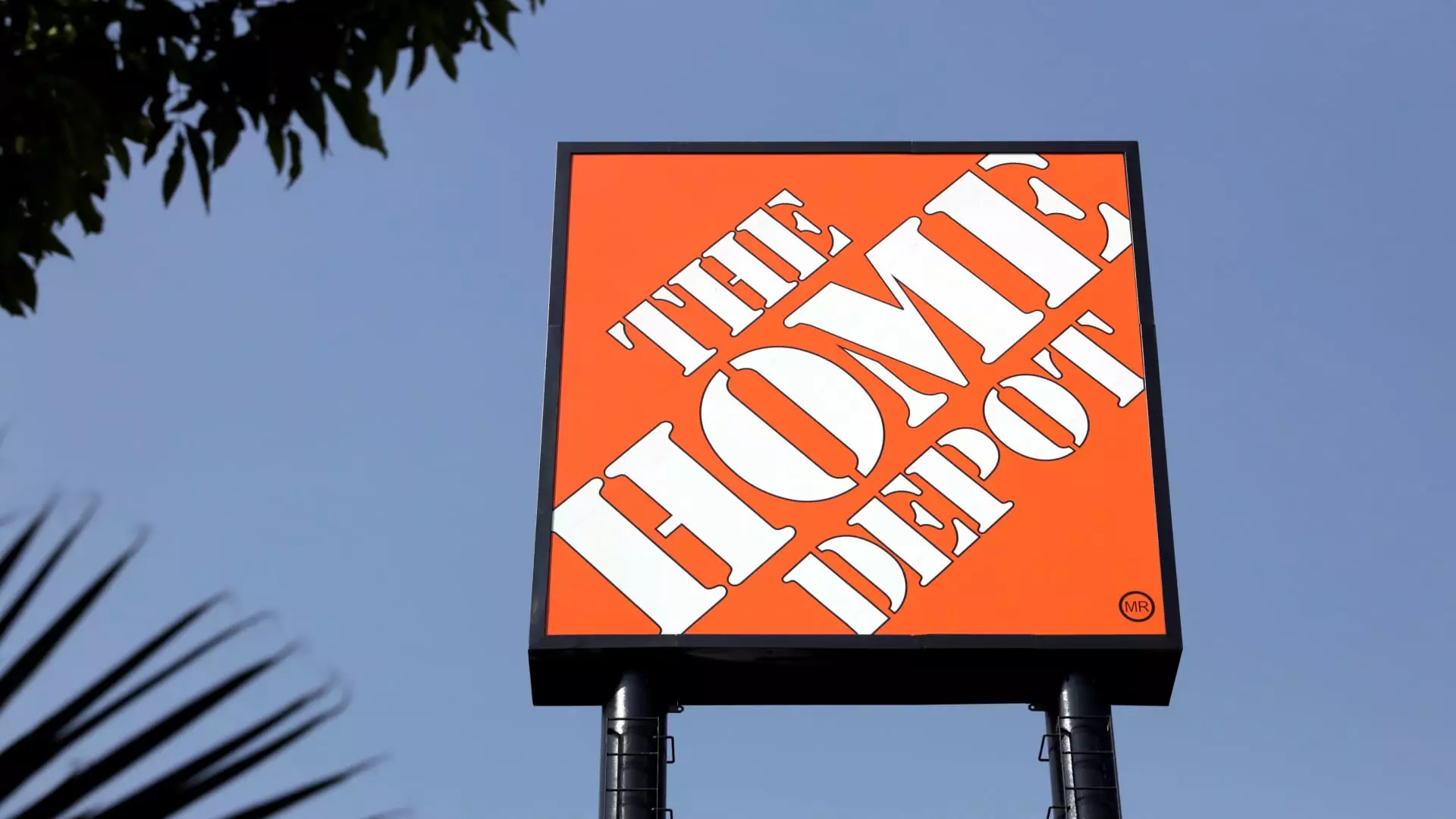Home Depot has demonstrated a noteworthy rebound in its financial performance, reporting a 6% increase in quarterly sales compared to the previous year. This rise can be attributed to a strategic acquisition, favorable weather conditions, and urgent repair needs related to recent hurricanes. Notably, the company unveiled its revised full-year outlook, anticipating a 4% growth in total sales, a positive adjustment from its earlier estimate of 2.5% to 3.5%. Such a proactive stance signals confidence in Home Depot’s correlation with fluctuating market demands and its ability to adapt to both external and internal challenges.
The Impact of Strategic Acquisitions
A significant factor in Home Depot’s recent sales surge was its acquisition of SRS Distribution, a move that underscores the company’s commitment to bolstering its position within the home improvement sector. For context, SRS Distribution supplies products to professionals in roofing, landscaping, and pool maintenance, thus expanding Home Depot’s reach into professional markets—a sector less susceptible to economic downturns. The acquisition is expected to contribute approximately $6.4 billion to Home Depot’s total sales, positioned as a stabilizing force in unpredictable financial climates.
Home Depot’s Chief Financial Officer Richard McPhail highlighted a critical observation about consumer purchasing behavior: despite solid financial health among customers, many are delaying major projects. Factors like high mortgage rates and consumer caution regarding economic uncertainty have led to subdued spending. However, there exists a sense of ‘pent-up demand’ as customers confront evolving life circumstances that necessitate home projects. As families change—growing or downsizing—the urge for remodeling remains; it simply awaits a more favorable economic environment. This sentiment illustrates the complex relationship between consumer confidence and spending.
In the fiscal quarter ending October 27, the numbers reflect mixed outcomes for Home Depot. On one hand, earnings per share reached $3.67, slightly above Wall Street expectations, and revenue climbed to $40.22 billion. On the other hand, net income exhibited a decline from the previous year, falling from $3.81 billion to $3.65 billion. Comparable sales experienced a 1.3% drop, highlighting the persistent challenges the company faces in maintaining customer engagement and loyalty amidst changing economic landscapes.
Seasonal weather patterns played a pivotal role in shaping Home Depot’s sales for the quarter. The summer weather was more favorable, boosting outdoor sales, while hurricane-related purchases contributed significantly to the quarter’s reported sales growth. Customers fortified their homes by purchasing generators and plywood, clearly demonstrating the cyclical nature of retail based on environmental conditions. This seasonal influence reinforces the importance of adaptability in inventory and sales strategy, allowing Home Depot to capitalize on transient consumer needs.
Despite facing headwinds in comparable sales, Home Depot’s stock has shown resilience, gaining about 18% this year compared to the broader S&P 500’s 26% increase. Investors remain optimistic about Home Depot’s long-term prospects despite short-term fluctuations. This confidence can be partially attributed to indications that housing turnover may stabilize, providing a potential catalyst for increased consumer spending on home improvement. The recent Federal Reserve interest rate cut also fosters a favorable financing environment, signaling a possible uptick in housing market activity.
Challenges Ahead: Inflation and Supply Chain Concerns
Looking forward, Home Depot must navigate potential inflationary pressures and supply chain challenges. The prospect of tariffs on imported goods could elevate operational costs, challenging the retailer to maintain competitive pricing. Home Depot’s commitment to diversifying its sources—focusing on North America while observing developments in Asian markets—could mitigate some risks associated with reliance on foreign imports. Retail leaders across the industry anticipate price adjustments as they respond to evolving trade policies, a factor that could impact consumer behavior and, by extension, Home Depot’s bottom line.
The Holiday Season: A Boost in Sales
The holiday season offers Home Depot a setting to bolster sales further, particularly through its extensive holiday product offerings. The retailer’s trend of introducing eye-catching seasonal decor has resonated well with consumers, evidenced by the success of viral products like their 12-foot Halloween skeleton. This blend of product innovation, coupled with a strong seasonal marketing strategy, positions Home Depot to capture the attention of consumers looking to enhance their holiday celebrations.
Home Depot’s latest quarterly results reflect a complex interplay of favorable acquisitions, consumer behavior, and external economic factors. While the retailer faces headwinds in the form of economic uncertainty and fluctuating consumer confidence, its resilience, strategic foresight, and adaptability to market demands signify a promising trajectory for the future. The evolving dynamics present both challenges and opportunities, suggesting that Home Depot will continue to be a pivotal player in the home improvement retail space.

